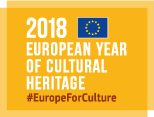HEROMAT - Photocatalytic self-cleaning coating and consolidants for mineral substrates
Challenge: WHY the innovation has been developed? What problem is addressed and why has not been not solved before?
The FP7 multidisciplinary research cooperation project HEROMAT was directed towards the development of innovative environmental friendly materials with value added functions, aimed for protection of immovable Cultural Heritage assets. The challenge was to contribute to effective, long-lasting solutions for the prevention of degradation, keeping the authenticity, functionality and the aesthetic appearance of the cultural assets, and having socio-economic benefits. The new approach was reflected in the innovative attempt to use inorganic-inorganic system, compared to market available organic-inorganic ones with minimal effects against microbiological corrosion. The innovative output of HEROMAT project is a set of novel materials – self-cleaning coating and consolidant - applicable for the protection of different inorganic mineral substrates (brick, mortar, stone, concrete, colour layers) providing multiple added functions: consolidation, self-cleaning, and anti-microbial protection.
Solution: WHAT the solution is about? HOW it goes beyond the state of the art?
Protective coating is effective for different inorganic substrates of historical and modern buildings, especially in urban areas. The self-cleaning properties of the coating enable historic objects and modern facades to keep their aesthetic appearance longer, and decrease regular maintenance costs. The product is eco-friendly with zero negative footprints on the environment. It uses the power of UV light to decompose pollutants and rains to wash decomposed pollutants of the surface (self-cleaning effect). The innovation decreases level of aero pollution in urban areas and improves appearance of urban landscapes. Therefore, it improves quality of life in urban areas and aesthetic appearance of urban landscapes, adding self-cleaning properties to historic and modern facades. Main advantage of new consolidant for carbonate-based materials is greater consolidation efficiency of historic materials and consolidation of deeper layers of degraded materials. It results in greater durability of consolidated historic material and could preserve historic material for longer periods of time. Due to water used as a solvent, the consolidant is eco-toxicologically friendly.
End-users and examples of uses: WHO will beneficiate/ is beneficiating from the solution? WHERE and HOW the solution has been adopted? How will impact people or end-users? Add as more as possible examples of market and society uptakes
Both new materials – self-cleaning coating and consolidant – are aimed for conservation and restoration of architectural heritage, monuments and fresco paintings. Additionally, innovative self-cleaning coating could seek wide applicability in modern civil engineering as well. Based on results from laboratory testing and in-situ monitoring (consumption, environmental impact, photocatalytic activity) the self-cleaning coating was applied on the historic objects in Serbia and Slovenia, including Medieval Fortress in Bač, Serbia and baroque Manor in Dornava, Slovenia (under the project), Petrovaradin Fortress and modern art murals in the city of Novi Sad - European Capital of Culture 2021. It proved to: • be compatible with selected substrates, transparent and reversible; • increase durability towards the action of pollutants (photocatalytic and antimicrobial activity, hydrophilic surface properties); • maintain water vapour permeability; • adapt to different application techniques and levels of substrate physical damage • decrease regular maintenance costs of historical and modern buildings. Comparative in-situ study of wall paintings consolidation, using newly developed and commercial consolidants, showed very promising recovery in mechanical properties with no whitening effect after application of new consolidant. It is applied on several churches for consolidation of fresco paintings and iconostases in Slovenia, Croatia and Serbia.
Future possibilities: Future market perspectives when the innovation will be fully available or in use
Both innovative products – self-cleaning coating (commercial name NANOFAS) and consolidant – are available to professionals through the SEE region and Europe. After the project ended there was a gap in regard to commercialization perspectives, reflected especially in lack of fund and expertise for EU market placement. The plan for full commercial availability of these two innovative products is under development and targets regional market, EU and Russia. Meanwhile, both products can be purchased directly from the project partners (see contacts below). Both innovative products developed under HEROMAT project gave an important contribution to the conservation of the Bač Fortress, which won prestigious European heritage Award / Europa Nostra Award and Grand Prix in category conservation in 2018 – the European Year of Cultural Heritage http://www.europeanheritageawards.eu/. The presentation of the Award is organized on the historical site of the Bač Fortress in October 2018 and the innovative products were again presented to policy makers, representatives of EU Commission and CH professional community.
Media coverage
• New 'skin' for old stones, Euronews Knowledge, https://www.youtube.com/watch?v=rU5ToGd_pak • Brochure about project dissemination http://www.heromat.com/images/documents/results/heromat-brosura-wp1and2and10.pdf • Green coating and consolidants ease the restoration of historical objects, https://phys.org/news/2016-02-green-coating-ease-historical.html • The Bač Fortress, European heritage Award / Europa Nostra Award, http://www.europeanheritageawards.eu/winners/the-bac-fortress/
References for more information (eg. website, social media)
Contacts:
Prof Dr Jonjaua Ranogajec (janjar@uns.ac.rs)
Application sectors:
- Historical sites
- Cultural Tangible and intangible landscapes
- Heritage-led urban regeneration and adaptive reuse
- Restoration and conservation of CH
- Nature Based Solutions for Rural and Urban CH
- Environmental sustainability and energy efficiency
Objectives:
- Market/business development
- Consumers’ awareness and information, trust building
- Regional/Local development
- Knowledge sharing and education
RRI Dimensions:
- Science Education
- Open Access
- Ethics
- Governance
Communities:
- Advanced future technologies for heritage and arts

